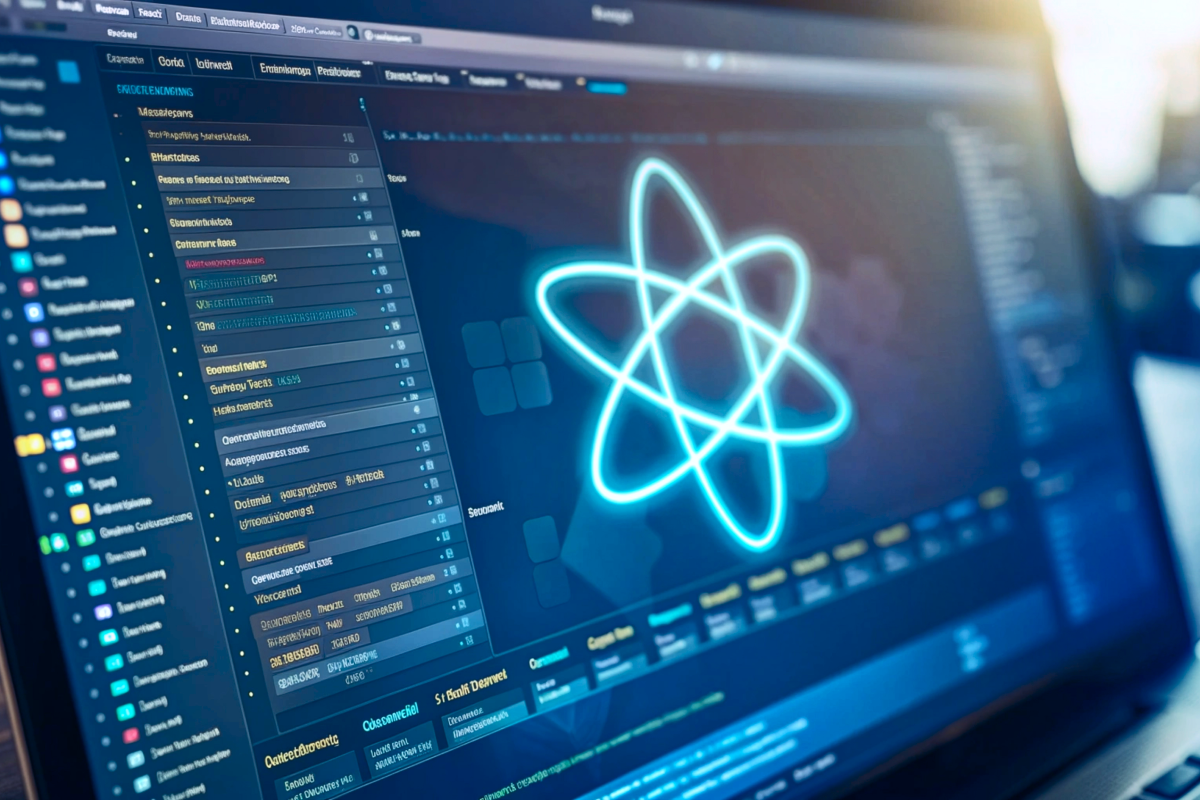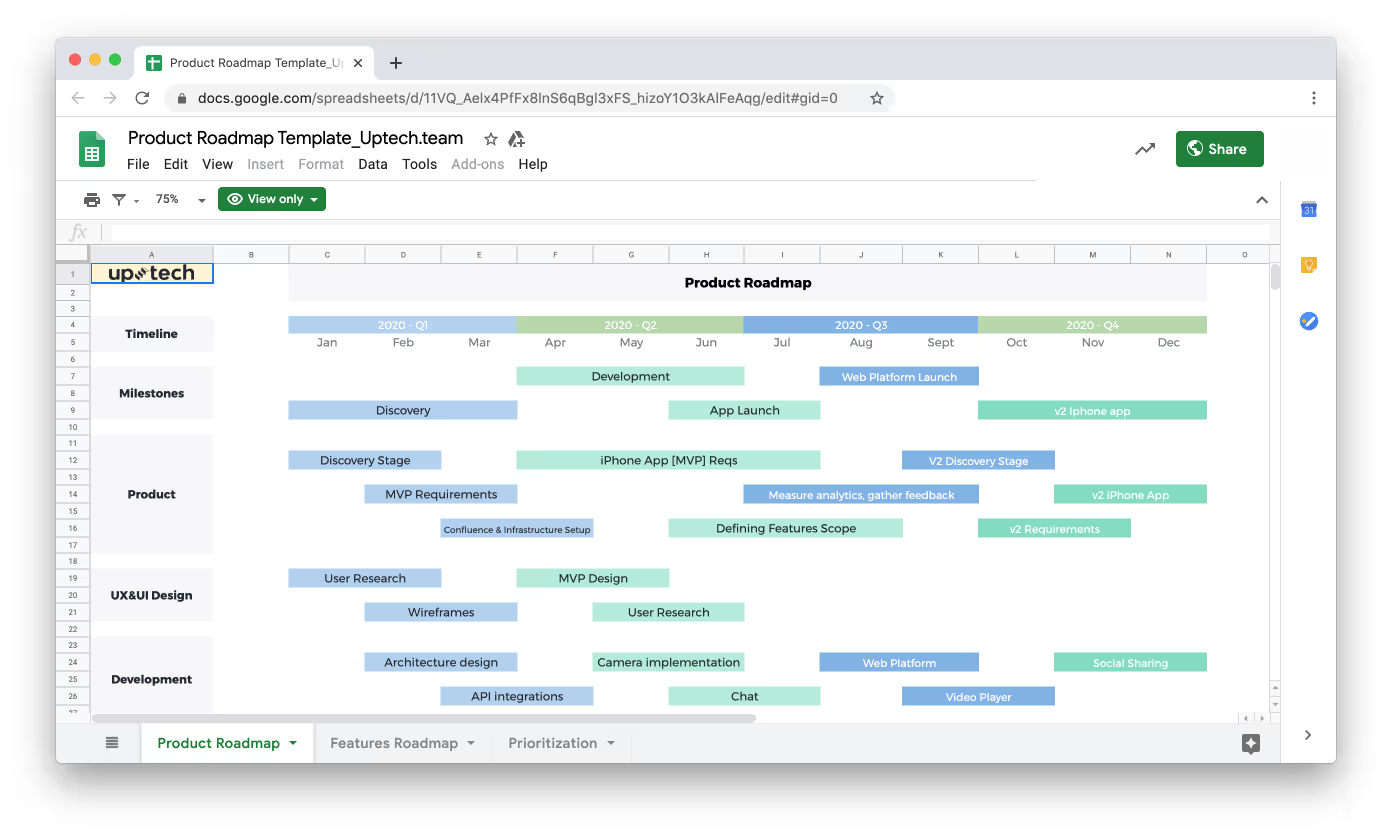Back in the day, no one could have imagined that computers would be able to understand human language and respond according to intent. Nor would they be able to replace customer support, carrying out the entire dialogue process. Yet, this is our reality, and this magical capability to engage in human-like interactions is called conversational artificial intelligence (AI).
The global conversational AI market is projected to grow to USD 41.39 billion by 2030. Zendesk reports that 72% of CX leaders see AI agents as part of their brand, representing its values and voice.
The fact that conversational AI systems can understand and interact in a way that feels natural is truly amazing. But how is it possible? What is more important is how to build conversational AI software that can comprehend and process human language.
At Uptech, we have firsthand experience developing conversational AI chatbots. I’m Oleh Komenchuk, the company’s ML Lead, and I’ll draw on my background to explain a conversational AI definition, shed some light on the process of building a conversational AI bot, touch on the tech stack behind the curtains, and give examples of possible use cases.

What is Conversational AI, and How Does It Work?
Conversational AI is the type of AI people can talk to. It comes in the form of text chatbots and voice assistants that carry out a conversation by processing the inputs and generating responses.
Conversational AI technology: Main components and concepts
Even humans sometimes struggle to understand each other. Imagine the challenge for machines, which need to interpret human text and generate appropriate responses accurately.
Consider various ways a customer might ask about their account balance in a banking scenario. Simple requests could include "What's my current balance?" or "How much money do I have?" Alternatively, customers might phrase their inquiries more indirectly, such as "Show me my recent account summary" or "I need to view my latest account statement."
These requests seem quite obvious to people. Computers, though, require additional help in the form of sophisticated technologies to manage this level of communication effectively. This is where conversational AI comes into play.

The main technologies behind conversational AI solutions are:
- Natural language processing (NLP)
- Machine learning (ML)
- Deep learning (DL)
- Text-to-Speech (TTS) and Speech-to-Text (STT)
Natural language processing
NLP is a subfield of AI that helps machines process human language and generate responses. It handles both speech and text data. NLP allows the system to understand and produce human speech by translating complex linguistic nuances into a machine-readable format.
There are two subsets of NLP:
- Natural language understanding (NLU) examines the grammar and semantics of text to extract its meaning. This enables the AI to comprehend complex instructions and provide accurate and contextually appropriate responses.
- Natural language generation (NLG) creates outputs as a human language text response based on some data input.
Machine learning
In conversational AI, machine learning algorithms use the data processed by NLP to learn and make decisions. The ML models analyze patterns in the data, learn from each interaction. This creates a feedback loop where the system becomes more accurate and context-aware over time, enabling smarter responses and better personalization for frequent users.
For example, if a user consistently corrects the AI’s interpretation of a particular phrase, like “FR” instead of “for real,” the model adapts and updates its algorithm to interpret this phrase more accurately in future interactions.
Deep learning
Deep learning is a type of machine learning that uses algorithms with multiple layers, called neural networks, to process data. These layers work together to gradually extract higher-level features from the input. You can think of it as layers in a cake — each layer looks at the data a bit differently, and by the time it gets to the top, the computer can understand complex things like human speech.
In conversational AI, deep learning powers speech recognition, intent detection, and natural-sounding responses by handling huge amounts of unstructured data such as voice, text, and even sentiment.
Text-to-speech and speech-to-text
TTS converts the AI's text responses into audible speech, letting users hear replies. STT (or automatic speech recognition) performs the opposite function: It converts spoken words from users into text, which the AI processes.
Modern systems use deep learning models to capture nuances of pronunciation, intonation, and even emotion in TTS, while STT leverages neural acoustic and language models to handle different accents, slang, and noisy environments.
How conversational AI works
The above-mentioned technologies mesh in a continuous cycle, constantly improving AI algorithms. So, how does conversational AI work? Here's an example.

While conversational AI systems can vary from case to case, here’s a typical setup through a customer service scenario.
Key conversational AI components
User interface. This is a client-side where users interact with the AI, typically through platforms like a custom bot or Facebook Messenger.
Input analyzer. This is the NLU module that decodes and analyzes user input.
It involves several key processes:
- Tokenization — breaking down the text into manageable pieces (called tokens), like words, phrases, punctuation, etc.
- Word vectorization — converting words into numerical values that represent their meaning.
- Intent classification — determining the user’s goal using machine learning models, such as a Support Vector Machine (SVM).
- Entity recognition — identifying and extracting specific entities like dates, amounts, or product names. This involves techniques like part-of-speech tagging and named entity recognition to categorize words grammatically and identify key terms.
Dialogue management. The ML-powered module manages the conversation flow and uses the data from the NLU to generate contextually appropriate responses. This could involve simple decision trees or more complex deep learning networks like Recurrent Neural Networks (RNNs).
Integrations module. This is the optional component that connects to external APIs to fetch relevant data needed for the response.
Output module. The NLG component creates and delivers the AI’s response to the user.
Example interaction within the conversational AI platform
Suppose a user asks a financial chatbot, “Hello. Could you explain the fees on my last purchase?” Here’s how each component interacts:
- The query enters through the user interface of the chosen conversational platform via text or voice.
- The input analyzer determines
- the intent (the user's goal to understand transaction fees) and
- entities (details like “fees” and “last purchase” are recognized as key elements of the query).
- The dialogue management component uses the detected intent and entities to determine the best response strategy.
- The integrations module may retrieve transaction details from a banking API to provide accurate information.
- Finally, the output module constructs and sends a detailed response, stating, “The fees for your last purchase were $3.00 for international transaction services.”
In conversational AI, there's no limit to how many times a dialogue can cycle through. Each exchange improves the system's ability to discern user intentions and deliver increasingly precise and pertinent replies.
Now that you understand how this type of AI functions, let's look into how you can develop Conversational AI for your specific business needs.
How to Build a Conversational AI Chatbot in 6 Steps
First things first, to develop conversational AI systems, you need to train them on vast datasets, including text and speech, so that they can learn human language processing. This training enables the systems to interact with people naturally. They continuously learn and adapt from each interaction, improving their response quality.
Here’s a 6-step guide on how to build conversational AI and maximize its potential for your business.
- AI application planning
- Conversational AI design and architecture
- Data collection and preparation
- Development of a conversational AI chatbot
- Conversational AI testing and validation
- Deployment and monitoring

Step 1: AI Application Planning
You always start building a conversational AI application by planning it through. Decide why you need it in the first place. Identify areas where AI can be most beneficial: Is it marketing, sales, or maybe customer support? This initial planning phase typically spans 2-4 weeks, during which all the stakeholders:
- define goals
- create requirements
- draft technical tasks, etc.
Possible goals include:
- Automation of high-volume conversation management
- Enhancement of customer interactions
- Delivery of personalized product recommendations
- Provision of accurate information
- Response to frequently asked questions, among many other things.
Also, compliance with regulations like GDPR and CCPA should be ensured early in the development process to avoid future complications.
If you want to know how to build an app that meets all the GDPR requirements and can still gather information on users’ behavior for further improvement, read how we built a green investment app powered by AI.
Step 2: Conversational AI design and architecture
During this phase, the team maps out the user flow and constructs the conversational AI architecture. The process typically takes a few weeks to get this right. The focus here is on designing a user interface through which people will communicate with the AI. The interface design must be easy to navigate and attractive.
The architecture developed during this phase must ensure that the AI system fits well with the client's requirements as well as make interactions straightforward and effective.
The good news is that the design part can be done as a separate conversational AI service so that you can better grasp the product’s future and validate it.
Step 3: Data collection and preparation
The next step in building a conversational AI application requires high-quality data relevant to the conversational AI tasks. The requirement varies depending on whether you already have data in place or need to start from scratch.
Scenario 1: Using existing data
If you already have some datasets, such as documentation with FAQs or CRM data, that have been collected throughout the years, it doesn’t mean that you can feed the model with it right away. First, ensure it is relevant, up-to-date, and enough for the task (the latter must be read as “a lot of data”).
So, the team responsible must analyze the data to verify its applicability, preprocess it for consistency, and annotate it — if needed — with specific attributes like sentiment or intent, which are necessary for training the AI.
Scenario 2: Acquiring new data
How to build a conversational AI app if there’s no relevant internal data? You'll need to acquire it from external sources to build an AI chatbot. This might involve accessing public datasets that are pertinent to your domain. The process for new data includes:
- Data sourcing. We identify and gather suitable data from external resources.
- Data cleaning. The team may eliminate irrelevant details and correct any errors.
- Data normalization and augmentation. This process standardizes data formats and enhances the dataset to cover various scenarios.
- Data labeling. Data annotators tag the gathered information with labels to help the AI understand different elements, e.g., user sentiment — positive, negative, or neutral.
The time required for this step will depend on data availability and the extent of preprocessing activities needed.
Step 4: Development of a conversational AI chatbot
Here comes the most important yet most resource- and time-consuming part — conversational AI chatbot development. The time needed may vary from a few months to more than a year. There are many options for developers and non-developers alike when building a conversational AI chatbot.
Choose a fitting conversational AI model or framework
Depending on the complexity of the project as well as the resources available, there are a few paths you can take.
- Training your own conversational AI model
The common variants are based on classical deep learning models, such as:
- RNNs (Recurrent Neural Networks). These networks are specifically designed for sequences and can remember previous outputs when receiving the next inputs, making them simple yet limited by their short context window.
- LSTMs (Long Short-Term Memory Networks). An advanced version of RNNs is designed to address scalability issues with long input sequences. They include a special "cell" mechanism that helps preserve information from the start of the sequence as it processes longer sequences. However, they are more resource-heavy and complex to implement.
- Transformers. These powerful networks best understand the context and meaning by analyzing relationships in sequential data. Their core component — the attention mechanism — allows them to focus on different parts of the input data when making predictions. Transformers process the entire sequence at once, enabling parallel processing and faster training but requiring significant computational resources.
- Using pre-trained models and transfer learning
Pre-trained conversational AI models are models trained on large datasets to perform specific tasks like language understanding, which you can then customize. Transfer learning is when you take a model developed for one task and fine-tune it with your data to perform a similar but slightly different task. This process saves time and resources as you start with a model that already has a significant learning base.
- Leveraging Large Language Models via API
Using LLMs (Large Language Models) via API means integrating AI capabilities into your applications without building the underlying models yourself. Examples include:
- GPT-4 (OpenAI) offers advanced language understanding and generation capabilities.
- Gemini (Google) is known for handling complex dialogue management tasks.
- NVIDIA Riva focuses on real-time speech AI services.
- Rasa is an open-source platform that is particularly good for developing contextual AI assistants.
Of course, each offering has its own pros and cons, so it’s always better to examine all variants to make an informed decision.
- Opting for ready-made conversational AI tools and platforms
How to build a conversational AI application with no or almost no coding? Special tools are designed for non-developers to build chatbots easily: Some platforms only allow for a simple rules-based chatbot — a conversational interface that may rely on buttons or have only a few canned responses — while others incorporate more NLP functionality.
- Chatfuel allows the creation of AI chatbots for Facebook, supporting diverse content types and sophisticated interaction patterns.
- Botsify is a simple platform for creating bots with intelligent query matching and entity extraction features.
We have even more information on how to create an AI assistant in a separate blog post. Make sure to check it out.
- Developing with conversational AI frameworks
There's also the option to use special bot frameworks designed for building a conversational AI bot in a more advanced format. These frameworks aren't tied to a specific programming language; common choices include Python, Ruby, Java, PHP, and Lisp.
Major technology companies provide these frameworks, each with its own set of tools and capabilities. The good news is that a framework simplifies the development process with built-in functionalities that help you get started. Still, creating custom solutions might be better for overcoming limitations and achieving more specific functionalities.
Here are popular conversational AI frameworks:
- IBM watsonx Assistant supports the development of various types of conversational AI assistants and integrates multiple AI technologies.
- Microsoft Bot Framework enables building a conversational AI bot on Microsoft’s cloud with robust NLP capabilities.
- Google's Dialogflow utilizes Google’s data to manage complex conversation contexts effectively.
Creating a Minimum Viable Product (MVP)
During the conversational AI development phase, once you have selected the suitable AI model or framework, the good idea is to build a Minimum Viable Product (MVP) or a Proof of Concept (PoC). This decision allows you to test the prototype in a real-world environment and validate the chatbot's essential functionalities. By implementing this early in the development process, you gather valuable feedback that informs further refinement.
Uptech has extensive AI expertise and a product-focused mindset, so we will be happy to build a conversational AI MVP for you and maximize its potential.

Prompt engineering
Prompt engineering is the process of crafting and refining the initial phrases or questions — referred to as "prompts" — that guide conversations between the conversational AI software and users.
The team responsible begins by identifying common questions or tasks that users might ask or want the AI to perform. This is when the initial prompts that the AI will use to interact with users are created.
Once prompts are developed, they are tested in controlled scenarios to see how well they trigger the AI to provide the desired responses. This testing helps unfold gaps where the AI might not understand or misinterpret what the user is trying to communicate.
Based on the outcomes of these tests, the prompts are refined for better clarity.
Training the conversational AI model
Here comes the heart and soul of the whole conversational AI model development — the training phase.
The chosen model is either trained on the prepared data from the ground up or gets fine-tuned with your specific data, such as conversations from your business, to better suit your needs. This makes the AI more familiar with the language and scenarios it will encounter.
Next, the team adjusts the model’s settings, like how fast it learns or how much it can learn at once, to make it more accurate. Finally, a conversational AI application is tested with new data to ensure it can handle real-life conversations effectively.
Integrate and fine-tune with prompt tuning
This step adjusts the AI’s responses through prompt tuning, which allows for quick tweaks without a full retraining of the model. As you prepare the model for deployment, it's important to check that it meets all functional and performance criteria, making it effective in real-world scenarios and ready for practical use.
That’s how to build a conversational AI chatbot. But the journey isn’t over yet.
Step 5: Conversational AI testing and validation
You must test your conversation AI software to make sure it functions correctly and provides users with relevant responses. There are special tools to help with this endeavor.
Conversational AI testing tools
- TestMyBot is a library that integrates into your CI/CD pipeline. It supports Node.js and requires Docker.
- Botium (called the “Selenium for chatbots”) offers comprehensive QA testing from the API level to user interactions. It integrates with continuous integration pipelines and uses extensive datasets to train bots, including understanding human errors.
- Zypnos focuses on automated regression testing. It automates test case recording and execution. Without manual input, it provides quick feedback.
On top of that, there are platforms like Amazon Mechanical Turk, Botsociety, and Testbirds that can simulate interactions with potential users and give valuable feedback on bot performance.
Learn how to build an AI agent in our guide.
Metrics for testing conversational AI
When testing your chatbot, it’s important to track specific metrics for the bot's effectiveness check.
Here are the key metrics to consider:
- Chatbot response accuracy — assessment of whether the chatbot provides correct and relevant answers to user inquiries.
- Response time — measurement of how quickly the chatbot responds to user queries. Fast response times are crucial for maintaining user engagement.
- Resolution time — the average time it takes for the chatbot to resolve a user’s issue. This metric helps gauge the bot's efficiency in handling problems.
- Interactions per session — the number of interactions the chatbot needs to resolve a user's question. Fewer interactions indicate a more effective chatbot.
- Escalation rate — how often the chatbot fails to handle a query and escalates it to a human assistant. A lower rate suggests a more capable chatbot.
Step 6: Deployment and monitoring
The almost final step is deploying conversational AI systems using MLOps practices. MLOps, or Machine Learning Operations, automates deployment, monitors performance, and manages the model's lifecycle effectiveness, helping the AI model transition into real-world applications.
Basically, the AI is initially released in a controlled environment, where its interactions and performance can be rigorously analyzed. During this time, the team gathers feedback to fine-tune the system as needed.
So why is it almost a final step?
The key reason is that the development of such systems is a continuous cycle of support and optimization. As new data becomes available and technological advancements are made, ensuring that AI remains effective and up-to-date is inevitable.
Conversational AI Development Time and Costs
Two important questions are left unanswered yet:
- How long does it take to develop a conversational AI system?
- How much does it cost to build conversational AI, and what factors impact this?
When building a conversational AI bot, both the development timeframes and expenses depend on the complexity of the software you need.
Here’s a simplified breakdown of what to expect for simple, medium, and complex bots.
Simple conversational AI chatbots
Development time — up to 3 months
Cost range — approximately $5,000 to $20,000 (can be free)
Simple bots often use ready-made models and tools, which helps keep costs down. If you use tools that don't require much coding, you might even spend less. Simple conversational AI bots handle basic tasks like answering straightforward questions or giving simple responses. They do not have external integrations, nor do they provide analytics.
Some solutions are readily available and may cost you nothing. However, you can’t expect anything advanced or custom from them.
Medium complexity bots
Development time — 3-6 months
Cost range — approximately $20,000 to $150,000
These bots are a step up and can handle more data, integrate with systems like your CRM (if you don’t have one, you might want to read how to build a CRM), and offer some insights through basic analytics. They take a bit longer to build and cost more because they do more than the simple bots.
Complex high-level bots
Development time — 6-12+ months
Cost range — $150,000+
The most advanced conversational AI bots come with high-end features like the capability to handle multiple tasks at once, provide complex data analysis, and integrate with various systems — both internal and external. They are custom-built, which means they are designed specifically for your needs, leading to higher costs and longer development times.
For a more detailed and tailored answer, check our article on AI cost or feel free to drop us a line. We'll be happy to hear about your AI project and prepare a cost estimation for it.

Conversational AI vs Chatbots
Conversational AI is a general term for AI-based algorithms and models that enable machines to have human-like conversations. Chatbots, on the other hand, are special applications or systems that use conversational AI to communicate with users. While the terms may sometimes be used interchangeably, they are not necessarily the same.
A distinction must be made between a rule-based chatbot and an intelligent chatbot.

Traditional rule-based chatbots operate based on predefined rules and scripts — if X (a condition) occurs, then Y (a specific action) follows. That means their responses are limited to a narrow range of inputs. They can answer simple, predictable questions but struggle with complex or unexpected requests. Rule-based chatbots are, therefore, not a form of conversational AI.
Conversational AI, which uses advanced technologies like ML and NLP, dynamically generates responses based on user input and is not limited to a fixed script. Responses are drawn from the AI's extensive knowledge base to cover various topics and adapt to ambiguous or context-heavy questions. Unlike rule-based systems, these chatbots belong to generative AI and can automatically learn and develop further through each communication.
A conversational AI assistant handles various requests. Some can be managed with a straightforward question-and-answer approach, while others might involve a more detailed conversational flow.
Still wonder how to build a conversational AI chatbot that adds real value to your services? Check out our detailed guide on building an AI chatbot, where we break down the steps and tools you'll need to bring your AI assistant to life.
Common Conversational AI Use Cases Across Industries
Most think that businesses can only use conversational AI for customer service. And it’s partially true. Yet, the variations are endless. Through chatbots, virtual assistants, and other conversational interfaces, organizations can take advantage of the potential of conversational AI to automate tasks, provide personalized interactions, and offer round-the-clock support.
Here's how this technology is making an impact across various industries.
E-commerce
Conversational AI changes shopping experiences. How? Let's say you have a relatively big cosmetics store that includes hundreds of items in different categories. Customers want to save their time and don't want to scroll through all the products.
So, there comes a smart conversational AI chatbot that helps find products quickly. Moreover, it may offer personalized shopping advice based on user preferences and past shopping behavior. And handle transactions directly through chat interfaces.
Explore more possibilities that AI brings in e-commerce in our article.
Healthcare
Hospitals and clinics can use conversational AI to streamline operations. For example, a patient wants to check symptoms or schedule an appointment without waiting in line or on the phone. An AI-powered virtual healthcare assistant can quickly handle these requests, offer follow-up prompts for more precise symptom checking, and even connect them with the right specialist.
It can also remind patients of upcoming appointments or medication schedules, which results in improved healthcare outcomes and patient compliance.
Education
In a virtual learning environment, students can interact with a conversational AI as a tutor. The AI can provide personalized tutoring based on the student's learning history and current performance.
For instance, if a student struggles with a specific math problem, the AI can offer tailored explanations, suggest additional resources, and provide practice problems, making learning more engaging and efficient.
Human resources
In medium-sized and large companies, employees often have questions about benefits, policies, or payroll. A conversational AI system can autonomously handle these inquiries, direct employees to the right documents, and even assist with submitting time-off requests or expense reports. All of this reduces the HR department's workload and improves response times.
Financial services
Banks and other financial institutions often employ conversational AI for customer service, as we said before. Customers can inquire about their account balance, recent transactions, or credit card expenses without human assistance.
The AI can also offer financial advice based on the customer’s spending habits and savings goals, execute transactions upon request, and alert them to potential fraudulent activity.
Want to learn more about how generative AI applies to the banking industry? Check our recent article and explore the benefits and challenges of adopting the AI technology in fintech.
Conversational AI Examples
In this part, we have rounded up some popular conversational AI app examples you might already be chatting with or at least have heard of.

Siri. Apple's virtual assistant that hangs out on your Apple devices. Siri's pretty good at pulling up the info you need, handling tasks, or even suggesting what you might like next.
Google Assistant. Or, as Google says, “Your own personal Google” (not Jesus). This software is everywhere — phones, speakers, and displays. Just ask, and it’ll fetch answers, perform tasks, and play nice with other Google services.
Amazon Alexa. Alexa lives in Amazon Echo speakers and more, always ready to obey your voice commands. Whether it's playing music, controlling your lights, or giving you the weather, Alexa's on it.
Microsoft Cortana. Microsoft's Cortana works across various devices: It helps you stay on track with tasks and schedules and even throws in a good recommendation now and then.
Chat GPT. Based on OpenAI’s Generative Pre-trained Transformer model, ChatGPT loves to chat, and it offers responses that feel pretty darn human. Not to mention that many people have already called it “better than Google.”
Seeing the magic of all these systems might make you wonder if you could build something similar for your own business. Well, you certainly can! While your chatbot might not be the next big global AI, it can be built to effectively meet your customers' needs and bring their experiences to a new level.
Benefits of Conversational AI Chatbots
Gartner predicts that by 2026, AI will automate one in ten agent interactions, potentially saving $80 billion in labor costs.
Here are some key benefits to take into account:
- Customer experience
Unlike rule-based chatbots that rely on predefined scripts, conversational AI models are powered by NLP and NLU (Natural Language Understanding), allowing them to detect user sentiment, intent, and even frustration cues. This enables smoother turn-taking, empathy in responses, and dynamic conversation flows, similar to human dialogue. - Availability
Conversational AI operates 24/7 and handles multiple requests simultaneously, which reduces wait times. This around-the-clock accessibility is especially critical for global businesses where users operate across time zones. For example, healthcare apps can provide triage or appointment scheduling overnight, while fintech platforms can offer instant balance checks or dispute resolution without needing night-shift staff. - Cost efficiency
Conversational AI reduces staff costs by automating routine queries and tasks. Beyond cutting labor costs, conversational AI lowers customer acquisition and retention expenses by improving first-contact resolution (FCR) rates, meaning fewer follow-ups and escalations. - Scalability
AI scales smoothly to manage increasing interactions without compromising quality. Unlike human teams, AI agents can instantly handle surges in traffic — for instance, during Black Friday sales, tax season, or travel disruptions, maintaining average response times under one second. Platforms like Zendesk and Intercom integrate AI routing that dynamically assigns queries to bots or humans based on complexity, preventing queue bottlenecks. - Personalization
AI utilizes user data to make relevant and unique recommendations. Conversational AI can merge CRM, behavioral, and contextual data to generate hyper-personalized interactions: remembering prior purchases, preferences, or conversation history. For example, a digital bank’s chatbot can proactively suggest saving plans after detecting income deposits or spending patterns, while an e-commerce bot might adjust product recommendations based on browsing behavior and real-time inventory. - Operational efficiency
AI automates tasks, speeds up transactions, and accesses backend data. Through API and system integrations, chatbots can pull data from ERP, payment, and CRM systems to execute actions instantly: from verifying account details to generating invoices or updating shipping information. This drastically cuts the manual workload for support and operations teams and reduces error rates often caused by human data entry. - Data insights
AI gathers and analyzes interaction data to help businesses understand customer preferences and trends. Each conversation becomes a data point. By analyzing intent frequency, satisfaction scores, and drop-off moments, companies can pinpoint service gaps, retrain models, or adjust UX design. AI analytics dashboards (for example, from Google Dialogflow or IBM Watson) can even predict emerging issues like recurring complaints after a product update before they escalate. - Multi-channel support
Conversational AI integrates with various platforms, making services accessible across multiple digital channels. Its systems unify chat across web, mobile apps, social messengers, and voice assistants like Alexa or Google Assistant. The advantage lies in maintaining continuity. A user who begins a conversation on Instagram can resume it later via the website or email without repeating context, thanks to session memory and centralized conversation management. - Continuous improvement
AI chatbots use machine learning to enhance its understanding and performance capabilities over time based on user feedback and interactions. Through reinforcement learning and real-time intent retraining, modern conversational AI platforms continuously refine their models. For example, they can auto-flag misunderstood queries and retrain on them overnight, improving accuracy rates from 80% to 95%+ within months. This cycle makes sure that chatbots improve with language, business updates, and customer expectations.
Possible Conversational AI Development Challenges and Pitfalls
Developing conversational AI can face several challenges, but fear not; each has a potential solution.
Data privacy and security
Challenge. Conversational AI systems collect and process vast amounts of personal data to provide personalized services. This, in turn, raises concerns among users regarding data security and privacy.
Solution. You must implement robust security measures and compliance protocols to make things right. This includes encrypting data, conducting regular security audits, and adhering to international standards and regulations like GDPR. Additionally, it's a good practice to educate users about how their information will be used.
Misunderstandings and errors
Challenge. Even the best conversational AI applications are not perfect: They may incorrectly interpret user inputs or provide inaccurate responses, which can lead to user frustration and decreased trust in the system.
Solution. You will need larger, more diverse datasets to train the AI and improve its ability to understand varied speech patterns and contexts. Implement advanced NLP techniques and continuous testing to further refine the AI’s accuracy and responsiveness.
High development costs
Challenge. It's no secret that the initial development and implementation of AI are often resource-intensive and costly. This is especially true for complex systems with numerous integrations and diverse functionalities.
Solution. Adopt a phased development approach. Start with building an MVP to test key functionalities and gather user feedback before full-scale development. This approach helps manage costs and puts a focus first on features that offer the most value.
Maintenance and updates
Challenge. As with any other software that wants to survive in the predatory world of technology, conversational AI bots require continuous updates and maintenance to stay effective. This requirement, of course, is costly and labor-intensive.
Solution. A good piece of advice is to utilize MLOps practices. With them, you can improve the maintenance process, automate updates, and take the overall system management to a new level.
Integration complexities
Challenge. Integrating conversational AI with existing systems and platforms can be technically challenging and disruptive, especially if there are a lot of integrations going on.
Solution. Leverage modular architecture and API-first design. These strategies allow for easier and more flexible integration with your required IT infrastructures and services.
What Is The Future Of Conversational AI?
Do conversational AI solutions have a future? The question is rather rhetorical. Of course, they do, and it’s definitely bright and promising.
Here’s what to expect in the coming years:
- Smarter and more natural conversations
As time goes on, conversational AI will become more intelligent, context-aware, and lifelike. Future systems will understand not just what users say, but what they mean, using advanced large language models (LLMs) to recognize tone, intent, and emotion.
They’ll be able to remember previous interactions, adjust their responses, and carry longer, more natural conversations, similar to how humans talk. - Continuous progress in AI models
New generations of LLMs will be faster, more efficient, and better at reasoning.
This means chatbots and virtual assistants will make fewer mistakes, respond more accurately, and handle complex questions that currently require human help. - Emotional intelligence (Emotional AI)
Conversational AI will start to understand and react to human emotions. By analyzing voice, facial expressions, or text cues, it will detect if someone sounds stressed, happy, or frustrated — and adjust its tone accordingly.
This will make interactions feel more human and supportive, especially in healthcare, customer service, and mental health apps. - Multimodal communication
Future chatbots won’t be limited to text or voice. They’ll combine several forms of communication, like voice, images, video, and gestures, into one smooth experience.
For example, you might ask a question, see a visual answer on your screen, and confirm with a simple gesture. - Business and market growth
The conversational AI market is growing fast. According to Omdia, 77% of enterprises are already investing in conversational AI for digital customer experience.
As adoption rises, industries such as banking, retail, and healthcare are increasingly turning to AI assistants to boost service quality and reduce operational costs. - From chatbots to digital co-workers
In the near future, conversational AI will evolve into autonomous digital assistants that can plan tasks, take action, and collaborate with people.
They won’t just answer questions — they’ll anticipate needs, make recommendations, and handle routine work on their own.
At Uptech, we’ve turned AI ideas into real products across different industries.
Hamlet, for instance, is a smart web tool powered by OpenAI’s Davinci-003. It can read long texts or PDFs and instantly turn them into clear, concise summaries. What used to take hours of reading now takes minutes.
Then there’s Tired Banker, a platform built on GPT-4. It analyzes over a decade of S&P 500 earnings reports, breaking down complex financial data into easy-to-understand insights that help users make smarter decisions.
And in healthcare, we worked on a medical document processing system that blends OCR with self-hosted LLMs to securely extract information from clinical forms. It meets HIPAA standards and cuts manual document handling time by 30–34%, giving medical teams more time to focus on patients instead of paperwork.
If you have a project that requires building a conversational AI bot in mind, Uptech is here to help. As a reliable conversational AI development company, we're ready to guide you through the intricacies of the development process.
Contact us with your idea, and we'll handle the technical details.
FAQs
1. What is conversational AI?
Conversational AI is artificial intelligence that simulates human conversation using natural language processing (NLP). This technology enables computers to understand and respond to human language, making interactions more intuitive.
2. How to create your own conversational AI?
To create your own conversational AI, you need to follow these steps:
- Planning — you define your goals
- Conversational AI design and architecture
- Data collection and preparation
- Development of a conversational AI chatbot
- Conversational AI testing and validation
- Deployment and monitoring
3. How do you train an AI for conversation?
Train a conversational AI by using large datasets of dialogues and interactions. Employ machine learning models to understand and generate human-like responses. Continuously improve the AI's responses by refining the models with new data.
4. How to pick the right conversational AI solution?
Choose a conversational AI solution that integrates well with your existing systems and offers scalability. Consider ease of use, customization options, and the ability to adapt to your business needs.




















































































.avif)
















